Full Guide to Know About MP4 and WMV
In the ever-evolving realm of digital media, video formats hold immense significance. They are the essential building blocks determining how we store, share, and experience visual content. Two of the most frequently encountered video formats are MP4 and WMV.
Understanding their distinct characteristics is vital for making informed decisions regarding the format that best aligns with your specific needs. This comprehensive guide delves into the world of MP4 and WMV, providing a detailed comparison and offering valuable insights to help you navigate the video format landscape.
Part 1: Unveiling the Key Differences: MP4 vs WMV
MP4 and WMV, both renowned for their video-handling capabilities, manifest notable differences across various domains. These distinctions encompass critical aspects such as video quality, file size, popularity, compatibility, encoding options, multimedia ecosystem integration, and mobile device compatibility.
Delving deeper into these contrasts provides valuable insights into their suitability for different multimedia applications and environments. Understanding these nuances empowers users to make informed decisions when selecting the most appropriate format for their specific needs and requirements.
1. Video Quality:
MP4:
Generally, surpasses WMV in terms of video quality, particularly at higher bitrates. Its support for various codecs provides greater flexibility and the potential for achieving superior visual fidelity.
WMV:
May possess slightly smaller file sizes compared to MP4 for equivalent video quality due to its compression techniques. However, this benefit often comes at the expense of slightly lower overall quality.
2. File Size:
MP4:
Typically exhibits larger file sizes than WMV for the same video quality level due to its less aggressive compression approach.
WMV:
Often boasts smaller file sizes, making it a suitable option in scenarios where storage space is limited or internet bandwidth is constrained.
3. Popularity:
MP4:
Emerges as the clear victor in the realm of popularity. It enjoys widespread support across a vast array of media players, devices, and online platforms.
WMV:
Maintains a less prevalent presence, primarily found on older Microsoft products and specific software applications.
4. Compatibility:
MP4:
Reigns supreme in terms of compatibility across various platforms, operating systems, and devices. Its universal support ensures effortless playback on a wide range of platforms.
WMV:
May necessitate specific codecs or players on certain platforms, especially those outside the Microsoft ecosystem.
Part 2: How to Convert MP4 to WMV and Vice Versa
HitPaw Univd (HitPaw Video Converter) emerges as the premier solution for seamless MP4 to WMV conversions, offering unparalleled quality preservation throughout the conversion process. Its intuitive interface streamlines operations, enabling batch processing of multiple MP4 files effortlessly.
Unlike competing converters, HitPaw Univd guarantees clean output devoid of watermarks, ensuring professional results. Moreover, the software extends beyond conversion, equipping users with a versatile suite of editing tools. From trimming and cropping to rotating and adding subtitles or watermarks, HitPaw Univd provides a comprehensive solution within a single platform.
Features
- Helps you to convert MP4 to WMV
- Doesn't affect the video quality while turning the MP4 to WMV
- Doesn't put the watermark on the video
- Supports batch processing
- Compatible with Mac and Windows
Here's a detailed guide to convert MP4 to WMV via HitPaw Univd.
Step 1: Install the converter to your computer. Then initiate the process by selecting "Add Video" to import your files or simply drag and drop videos directly into the program interface. Your video files will be seamlessly imported into the queue of HitPaw Univd.
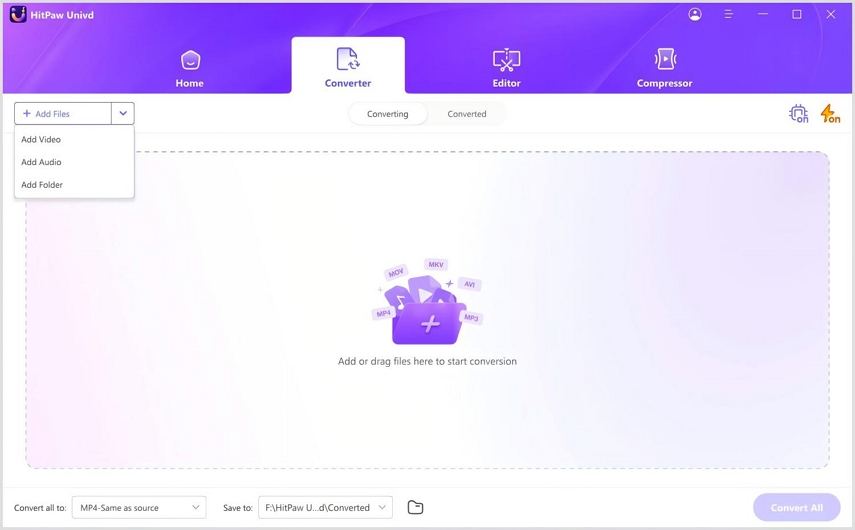
Step 2: You can edit the title by clicking on the file name and access media metadata editing by selecting the pen or info icon. Customize metadata fields, including title, artist, album, composer, genre, date, and description, to refine your video information within the HitPaw Univd.
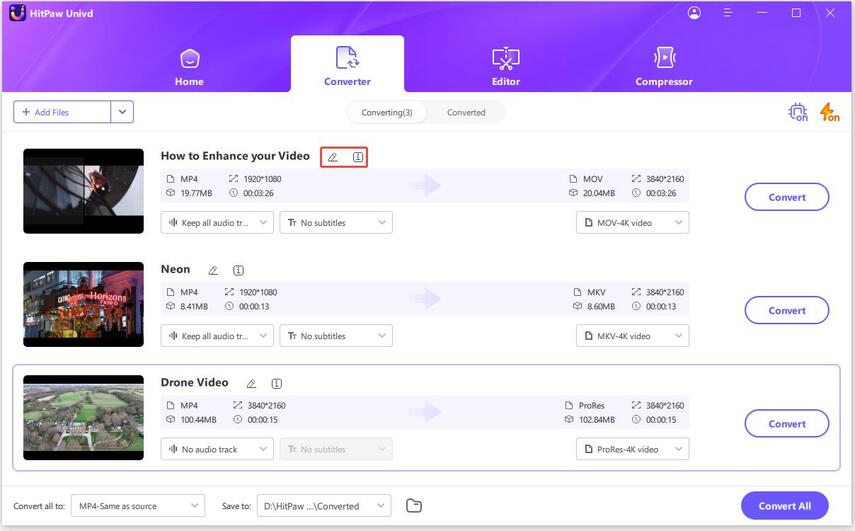
Step 3: Verify the subtitle status upon adding a video to the HitPaw Univd. If the default option is "No subtitles," it might imply that the video contains embedded hardware or closed subtitles. You can augment external subtitles by clicking "Add subtitles," with support for SRT, ASS, VTT, and SSA formats. Each subtitle file added will be organized based on import order, with a delete icon available for each entry.

Step 4: Tailor the output format for each file by accessing the inverted triangle icon beside each file. Alternatively, opt for a unified output format for all imported files by clicking "Convert all to" in the lower left corner. Customize format parameters using the edit icon to specify quality, video, and audio codec preferences.
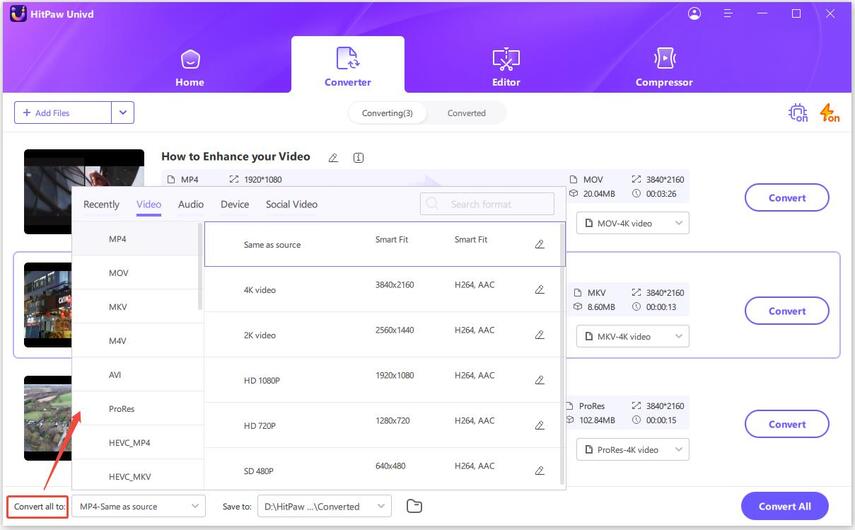
Step 5: Navigate to the Hardware Acceleration Detection and Lossless Conversion tab at the top-right corner. Select a target folder within the interface and initiate the conversion process by clicking "Convert" (or "Convert All" for multiple files). The video will be converted to the specified format seamlessly.
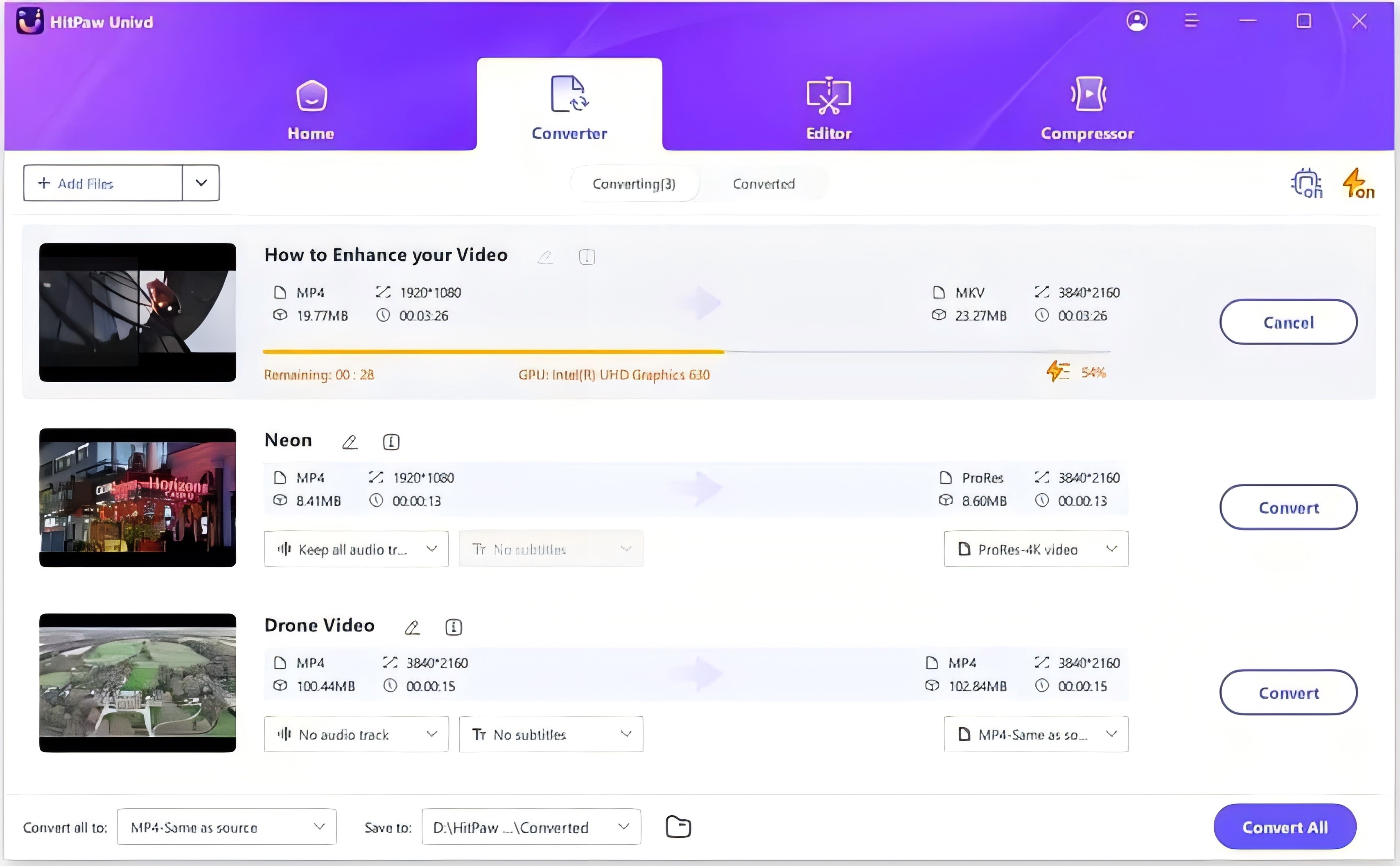
Step 6: Upon completion, access the Converted tab at the top to view the converted files. Click "Open Folder" to inspect the finished files or "Add" to edit your videos if necessary.
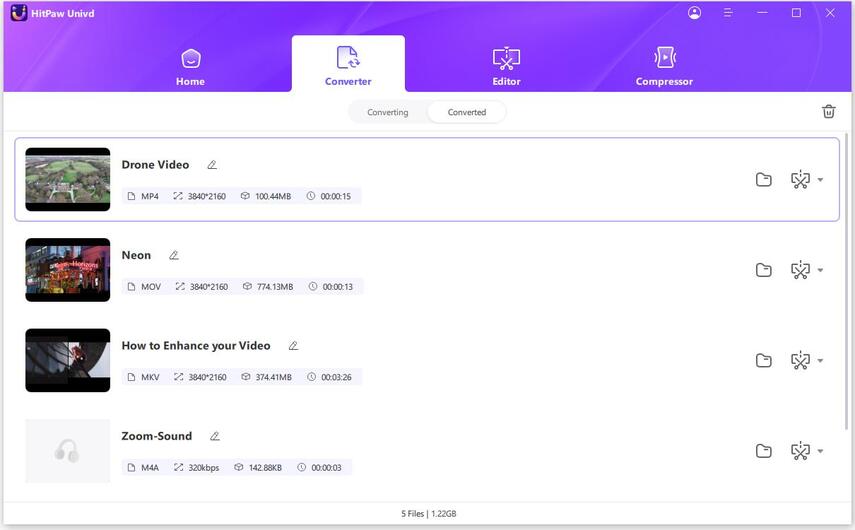
FAQs about MP4 and WMV
Q1. Which is better quality, WMV or MP4?
A1.
MP4 stands out as a preferred format over WMV primarily due to its superior quality and advanced compression algorithms. With codecs like H.264 and H.265, MP4 ensures high-quality video and audio streams while maintaining smaller file sizes compared to WMV. This compression efficiency is critical for conserving storage space and ensuring smooth playback across various devices and platforms.
Moreover, MP4 boasts extensive compatibility across devices and operating systems, making it a versatile choice for multimedia content distribution. In contrast, WMV may encounter playback issues outside of Windows environments, limiting its usability in diverse settings. MP4's ability to retain high-definition content makes it particularly well-suited for professional use and online streaming platforms. Its support for high-quality visuals and crisp audio ensures an immersive viewing experience for audiences worldwide.
Furthermore, MP4 has earned its status as an industry standard, enjoying widespread adoption across the multimedia landscape. This widespread acceptance enhances its reliability and support, making it a dependable choice for multimedia applications in diverse environments.
Q2. Should I convert WMV to MP4?
A2.
Converting WMV to MP4 offers numerous benefits. MP4 enjoys broader compatibility across devices and platforms, ensuring seamless playback. It typically maintains high-quality video and audio streams with efficient compression, resulting in smaller file sizes. MP4's versatility makes it ideal for online sharing and streaming platforms.
Moreover, MP4 ensures future compatibility with evolving technologies as an industry standard. Converting WMV to MP4 expands playback options and enhances quality and accessibility, making it a practical choice for users seeking wider distribution and longevity of their multimedia content.
Conclusion
Understanding the nuances between MP4 and WMV empowers users to navigate the landscape of video formats effectively, enabling informed decisions tailored to specific requirements. While MP4 typically excels in quality and compatibility, WMV remains a viable choice, particularly in scenarios where storage constraints are paramount. Tools like HitPaw Univd streamline the conversion process, offering a convenient solution for transforming video formats effortlessly.
By leveraging such tools, users can ensure seamless transitions between formats while maintaining desired quality standards. Ultimately, informed decisions rooted in understanding facilitate optimized outcomes, ensuring optimal compatibility and quality across various multimedia environments.







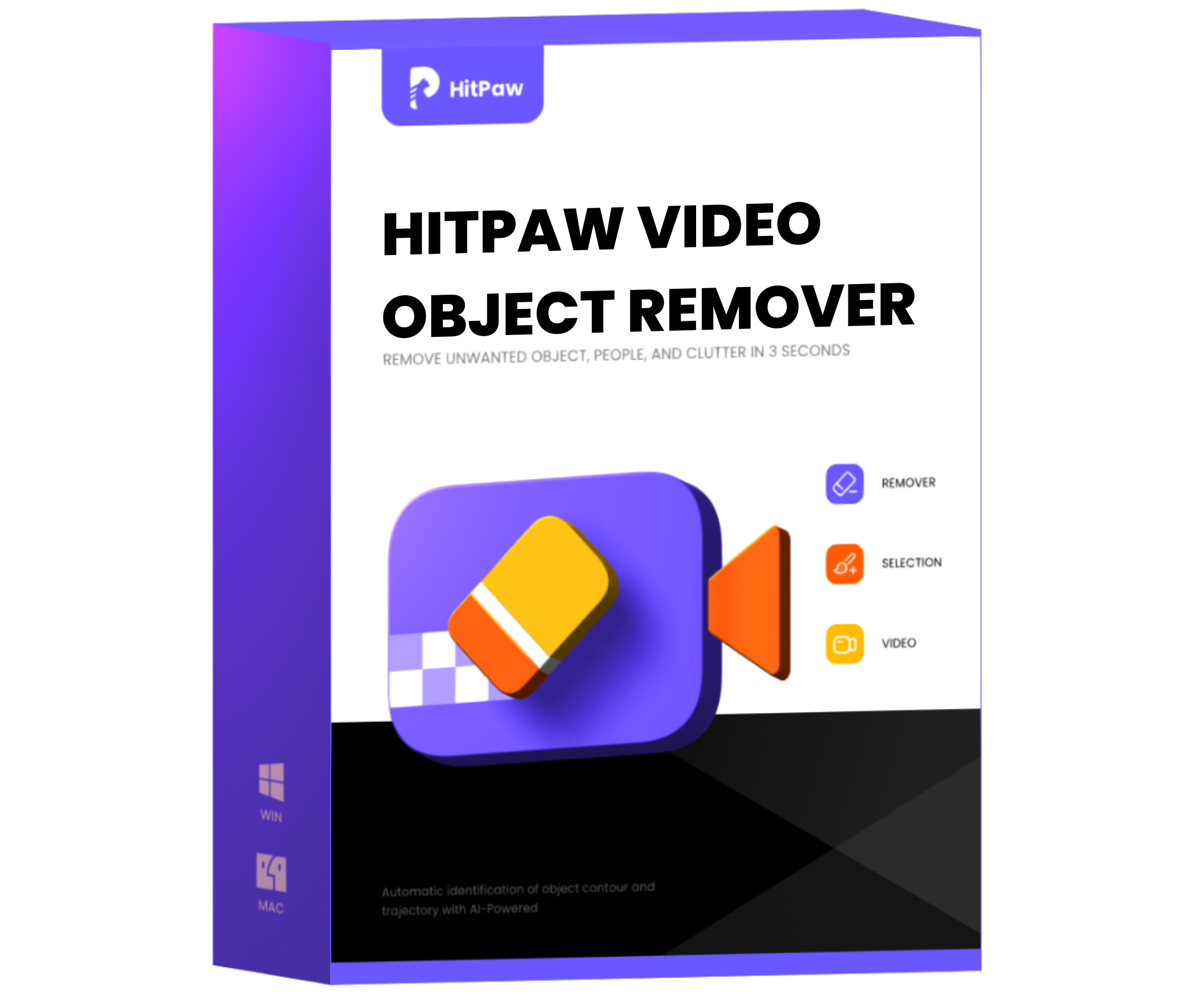 HitPaw Video Object Remover
HitPaw Video Object Remover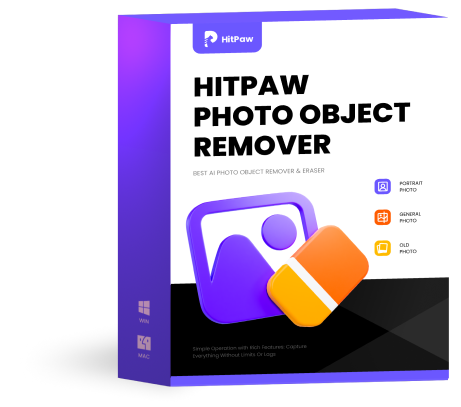 HitPaw Photo Object Remover
HitPaw Photo Object Remover HitPaw VikPea (Video Enhancer)
HitPaw VikPea (Video Enhancer)



Share this article:
Select the product rating:
Daniel Walker
Editor-in-Chief
My passion lies in bridging the gap between cutting-edge technology and everyday creativity. With years of hands-on experience, I create content that not only informs but inspires our audience to embrace digital tools confidently.
View all ArticlesLeave a Comment
Create your review for HitPaw articles